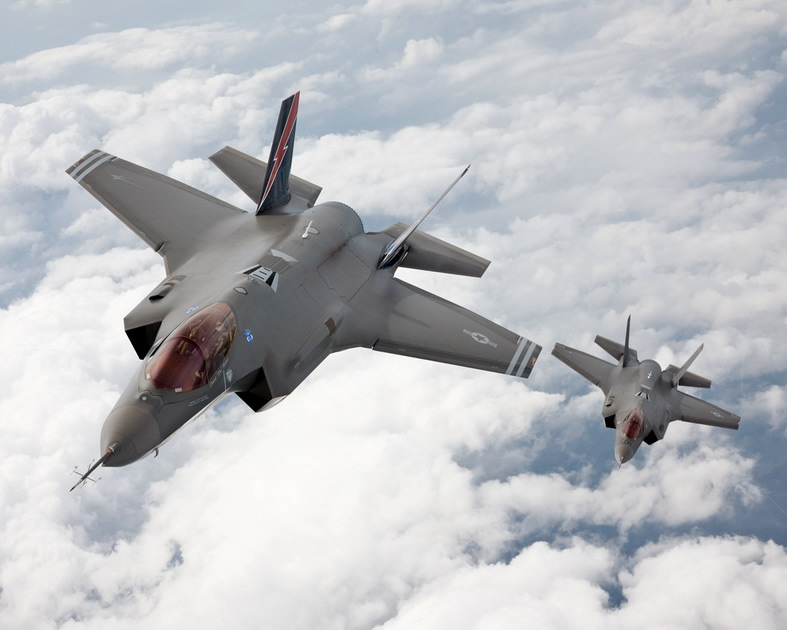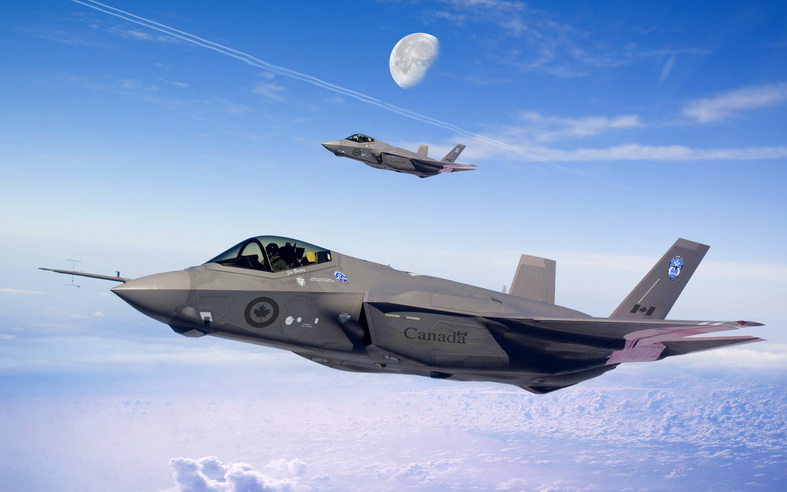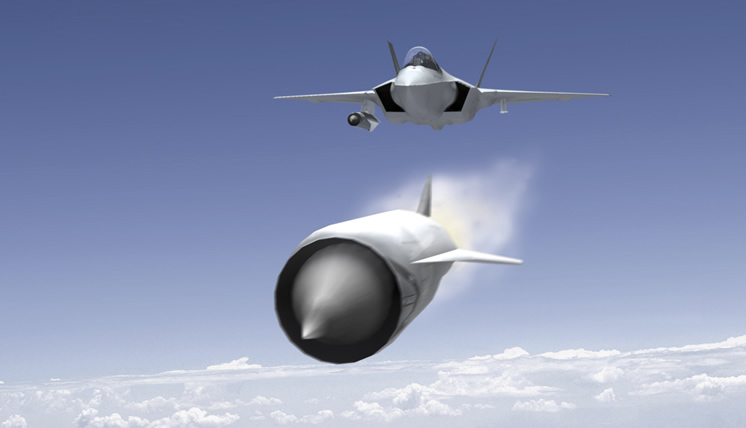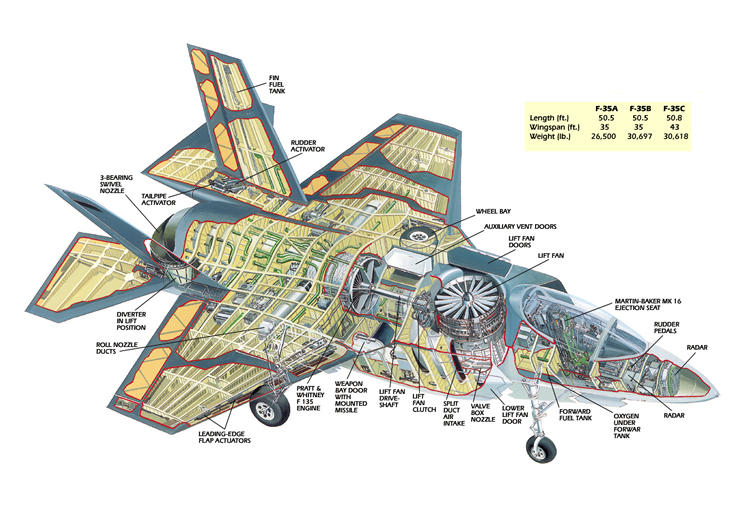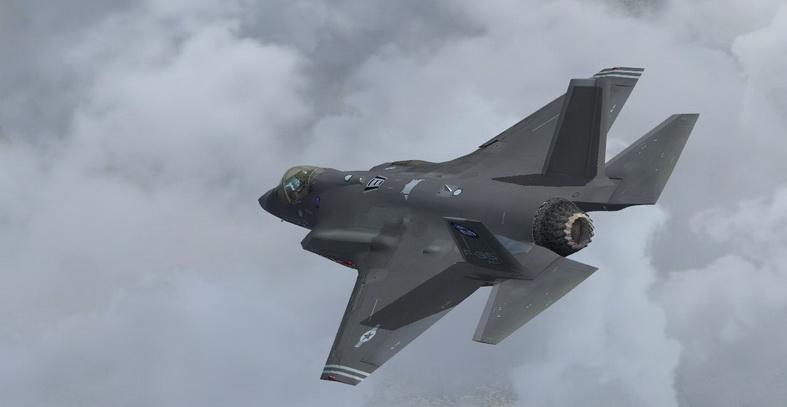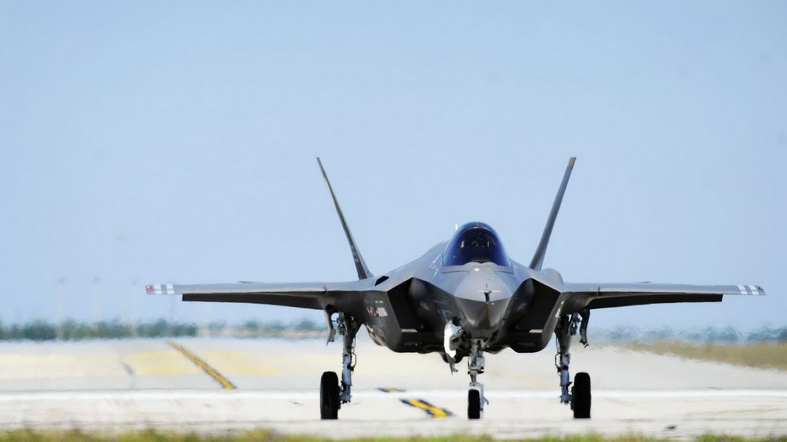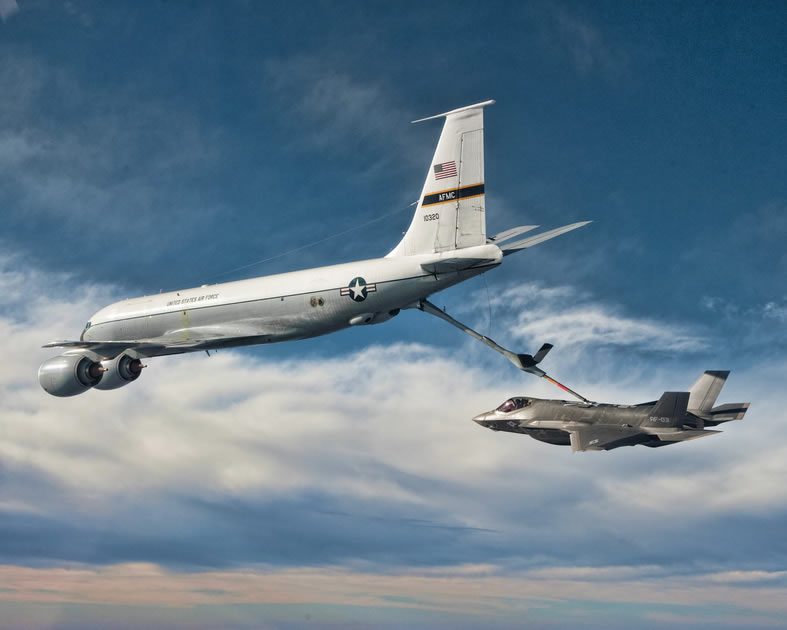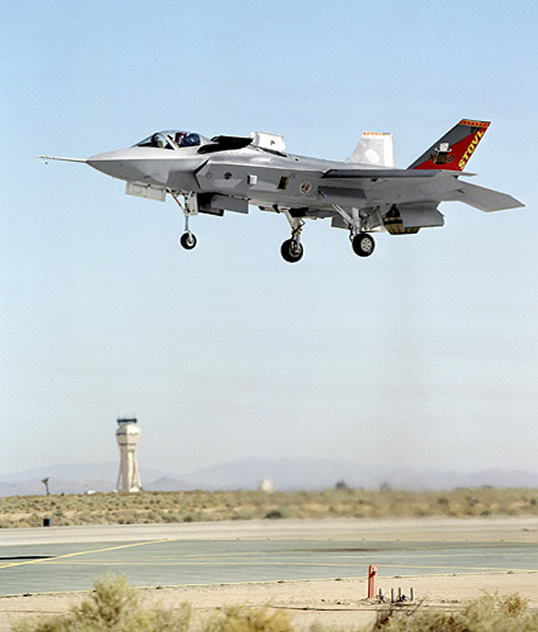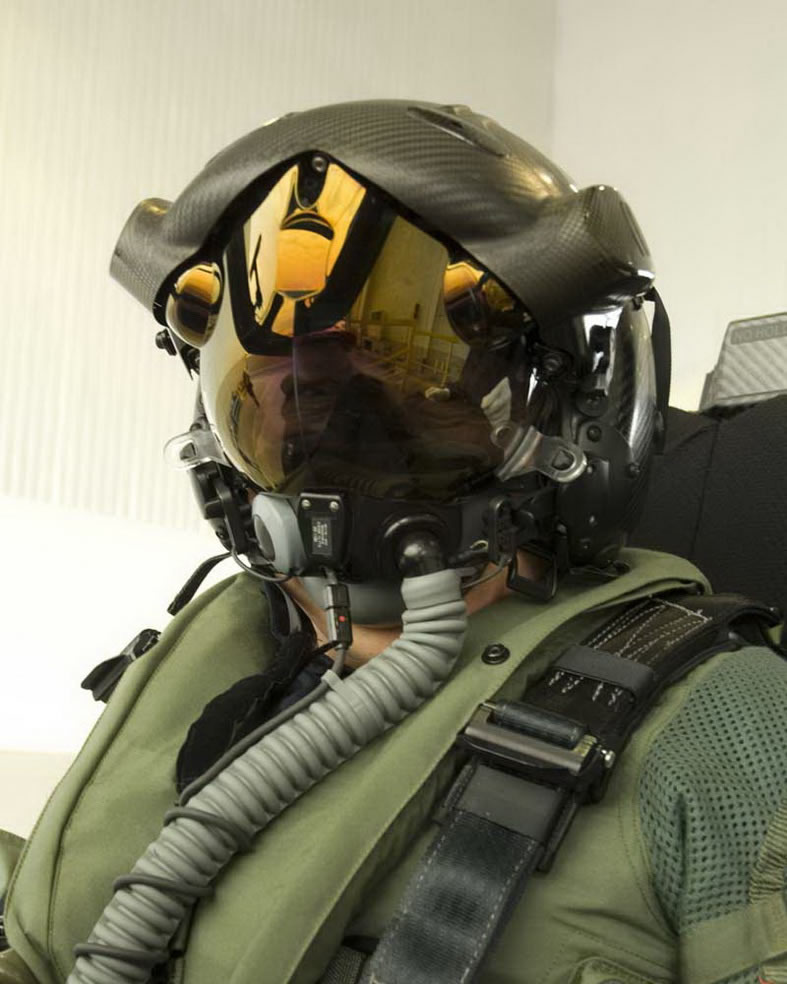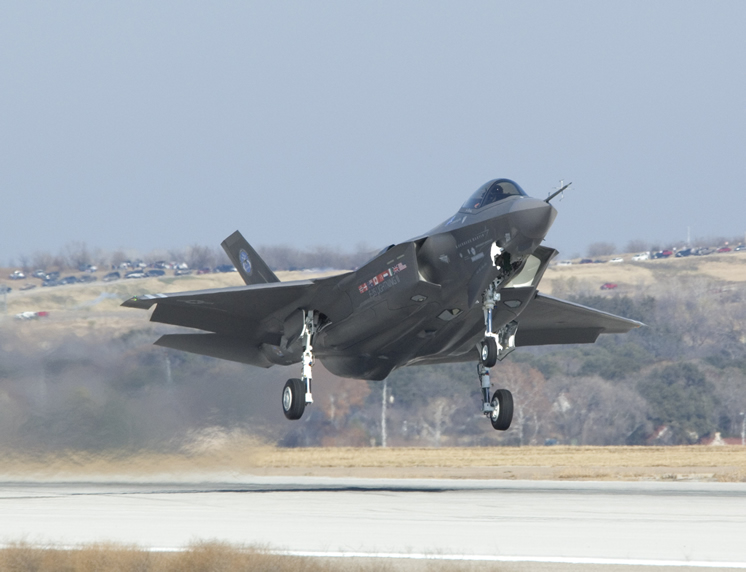US AIR FORCE AND US NAVY F-35 JSF (CTOL and STOVL)
AIRCRAFT PICTURES HISTORY AND FACTS
 |
The Lockheed Martin F-35 Lightning II is a fifth-generation, single-seat, single-engine, stealth-capable military strike fighter, a multirole aircraft that can perform close air support, tactical bombing, and air superiority fighter missions.The F-35 has three different models; one is the conventional takeoff and landing variant, the second is short takeoff and vertical-landing variant, and the third is a carrier-based variant.
The F-35 is descended from the X-35, the product of the Joint Strike Fighter (JSF) program. Its development is being principally funded by the United States, with the United Kingdom, and other partner governments providing additional funding. It is being designed and built by an aerospace industry team led by Lockheed Martin with Northrop Grumman and BAE Systems as major partners. Demonstrator aircraft flew in 2000, with the first flight on 15 December 2006.
Development F-35A, conventional takeoff and landing (CTOL) variant.
The F-35 is being designed to be the world's premier strike aircraft through 2040. It is intended that its close and long-range air-to-air capability will be second only to that of the F-22 Raptor. Specifically the F-35’s requirements are that it be: four times more effective than legacy fighters in air-to-air combat, eight times more effective in air-to-ground battle combat, and three times more effective in reconnaissance and suppression of air defenses. These capabilities are to be achieved while still having significantly better range and require less logistics support than legacy aircraft.
Origins and selection
The contract for System Development and Demonstration (SDD) was awarded on 26 October 2001 to Lockheed Martin, whose X-35 beat the Boeing X-32. DoD officials and British Minister of Defence Procurement Lord Bach, said the X-35 consistently outperformed the X-32, although both met or exceeded requirements. The designation of the fighter as "F-35" came as a surprise to Lockheed, which had been referring to the aircraft in-house by the designation "F-24".
Design phase
On 7 July 2006, the U.S. Air Force officially announced the name of the F-35: Lightning II, in honor of Lockheed's World War II-era twin-prop P-38 Lightning and the Cold War-era jet, the English Electric Lightning. English Electric Company's aircraft division was incorporated into BAC, a predecessor of F-35 partner BAE Systems. Other names previously listed as contenders were Kestrel, Phoenix, Piasa, Black Mamba and Spitfire II. Lightning II was also an early company name for the aircraft that became the F-22 Raptor.
Design
Some improvements over current-generation fighter aircraft are:
Cockpit
A helmet mounted display system (HMDS) will be fitted to all models of the F-35. While some fourth-generation fighters (such as the Swedish JAS 39 Gripen) have offered HMDS along with a head up display (HUD), this will be the first time in several decades that a front-line tactical jet fighter has been designed to not carry a HUD.
The pilot flies the aircraft by means of a right-hand side-stick and left-hand throttle, both of which are supplied by BAE Systems. The Martin-Baker US16E ejection seat is used in all F-35 variants. The US16E seat design balances major performance requirements, including safe terrain clearance limits, pilot load limits, and pilot size. It uses a twin-catapult system that is housed in side-rails.
Engines
The LiftSystem is composed of a lift fan, driveshaft, clutch, 2 roll posts and a "3 Bearing Swivel Module" (3BSM). The 3BSM is a thrust vectoring nozzle which allows the main engine exhaust to be deflected downward at the tail of the aircraft. The lift fan near the front of the aircraft provides a counter-balancing thrust. Somewhat like a vertically mounted turboprop within the forward fuselage, the lift fan is powered by the engine's low-pressure (LP) turbine via a driveshaft and gearbox. Roll control during slow flight is achieved by diverting pressurized air from the LP turbine through wing mounted thrust nozzles called Roll Posts.
The F-35B lift fan achieves the same 'flow multiplier' effect as the Harrier's huge, but supersonically impractical, main fan. Like lift engines, this added machinery is just deadweight during horizontal flight but provides a net increase in payload capacity during vertical flight. The cool exhaust of the fan also reduces the amount of hot, high-velocity air that is projected downward during vertical takeoff (which can damage runways and aircraft carrier decks). Though complicated and potentially risky, the lift system has been made to work to the satisfaction of DOD officials. Armament Internally (current planned weapons for integration), up to two air-to-air missiles and two air-to-ground weapons (up to two 2,000 lb bombs in A and C models; two 1,000 lb bombs in the B model) in the bomb bays. These could be AIM-120 AMRAAM, AIM-132 ASRAAM, the Joint Direct Attack Munition (JDAM) — up to 2,000 lb (910 kg), the Joint Standoff Weapon (JSOW), Small Diameter Bombs (SDB) — a maximum of four in each bay, the Brimstone anti-armor missiles, Cluster Munitions (WCMD) and High Speed Anti-Radiation Missiles (HARM). The MBDA Meteor air-to-air missile is currently being adapted to fit internally in the missile spots and may be integrated into the F-35. The UK had originally planned to put up to four AIM-132 ASRAAM internally but this has been changed to carry 2 internal and 2 external ASRAAMs. It has also been stated by a Lockheed executive that the internal bay will eventually be modified to accept up to 6 AMRAAMs.
At the expense of being more detectable by radar, many more missiles, bombs and fuel tanks can be attached on four wing pylons and two wingtip positions. The two wingtip pylons can only carry AIM-9X Sidewinders, while the AIM-120 AMRAAM, Storm Shadow, Joint Air to Surface Stand-off Missile (JASSM) cruise missiles and 480 gallon fuel tanks can be carried in addition to the stores already integrated. An air-to-air load of eight AIM-120s and two AIM-9s is conceivable using internal and external weapons stations, as well as a configuration of six two thousand pound bombs, two AIM-120s and two AIM-9s. With its payload capability, the F-35 can carry more air to air and air to ground weapons than legacy fighters it is to replace as well as the F-22 Raptor. |
© AviationExplorer.com - The Website For Aviation Enthusiasts |





